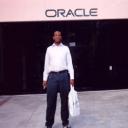Yahoo Answers is shutting down on May 4th, 2021 (Eastern Time) and beginning April 20th, 2021 (Eastern Time) the Yahoo Answers website will be in read-only mode. There will be no changes to other Yahoo properties or services, or your Yahoo account. You can find more information about the Yahoo Answers shutdown and how to download your data on this help page.
Trending News
Please help! Young's experiment; waves vs. particles?
I really don't understand how one can distinguish waves and particles from the results from Young's experiment.
How do waves act during the experiment?
How would particles act?
Please help ! I have been trying to figure this out on my own for a couple hours, and have gotten no where :(
if light behaved as particles, then ...
what would the results of Young's experiment illustate?
so, if ligjt behaved as particles, then, the light would shine straight; directly through the two slits, without any pattern?
3 Answers
- 1 decade agoFavorite Answer
particles act like physical objects that you know from every day life. they act like billiard balls or beach balls or bowling balls. you role them, they hit things and all you need to determine where things will go is things like conservation of momentum and conservation of energy.
Light is closer to magic. However it is still in the realm of things we understand. Go out to your nearest puddle or pool of water. Make some waves. Look at how the waves propagate across the surface of the waters. Notice that if you start waves at different points in the water and let the water waves hit each other that sometimes the waves with add and make a bigger wave and some times the wave will subtract and make a smaller wave or no wave.
So if you do the slit experiment with billiard balls then the calculating how many balls hit the walls of the pool table can be determined by Newtonian physics. You don't need anything more than what you learned as a kid on the playground to predict where the balls will end up.
But if, as is the case, light is composed of waves, then the looking at where the balls, or particles of light, or photons requires wave mechanics--a kind of statistics that works on waves. And some times the waves add and you get a lot of light and sometimes the waves subtract and you get less light or no light.
- 1 decade ago
I assume you're talking about Young's two-slit experiment. If so:
- This experiment proves that light has wave-like behavior because of the interference patterns that are produced when (coherent) light is shone through two very narrow slits. The interference pattern that occurs is consistent with what is predicted by theory when you assume that both slits act as the source of wave fronts. For example, at a point on the target surface which is X distance from the first slit, but exactly (X + half a wavelength) from the second slit, the pattern is entirely dark. This is because the two waves are exactly half a wavelength out of synch when they arrive and hence cancel each other out.
- Interference patterns wouldn't be seen if light was simply made of particles. So we know from this experient that light does have wave like properties.
- If light was just particle-like, you'd get an even distribution of light on the target surface - i.e. particles wouldn't cancel each other out / reinforce each other to create interference patterns.
- zukowskiLv 45 years ago
Particle: the image electric powered experiments and paper accomplished and written by skill of utilising A. Einstein indoors the early 1900s. He earned the Nobel Prize for Physics for this. This shown that photons had a particle nature, which contains momentum that could desire to knock loose electrons off some factors and create a favourite after reaching a discreet artwork function value. Wave: The in call for, oftentimes accomplished in HS lab, chop up slit try. the situation photons are gone by using 2 indoors sight slits and interference bands look on a demonstrate exhibit screen. This shows efficient and unfavorable wave interference by skill of utilising the photons and, for this reason, their wave like nature.


